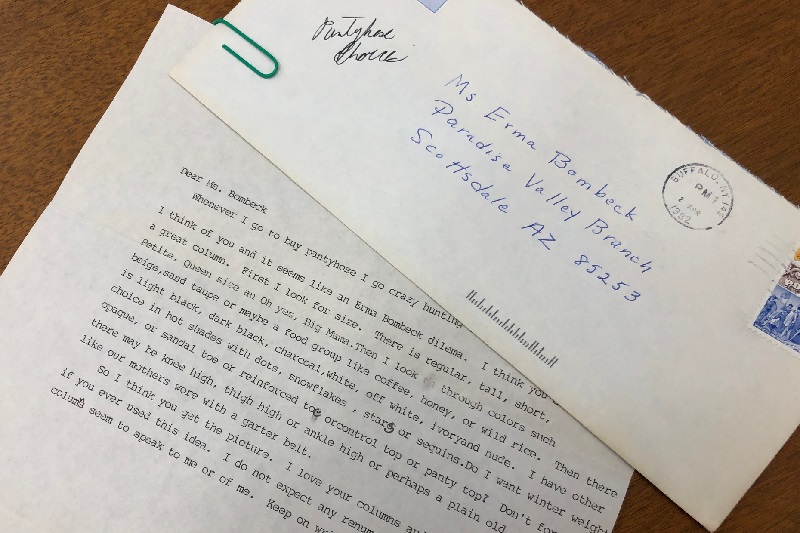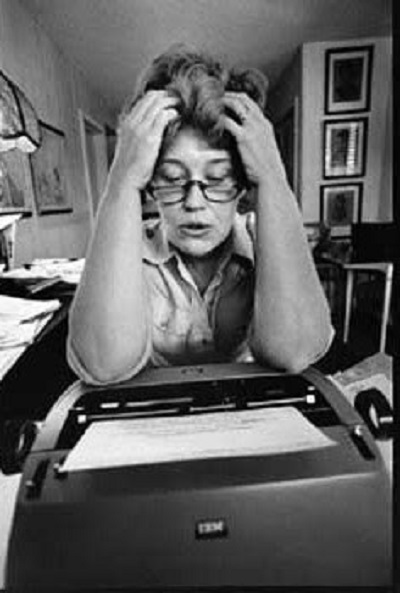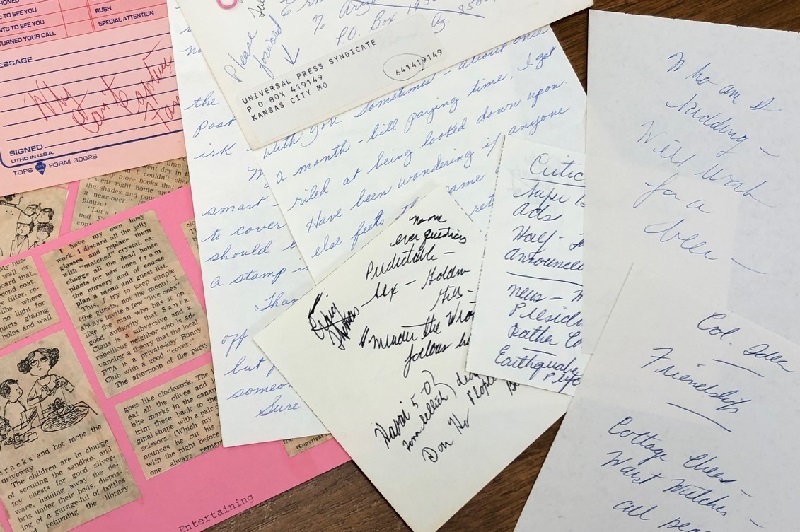University Libraries

Timeless Wit
By Katie Jarrell
In the spring of 2021, I graduated with my master’s in library and information science from Kent State University, not having any idea where I would find a job or what my future would look like. I had been a graduate assistant in the Kent State University Archive, but once my assistantship ended, the hunt was on to find my place in a pandemic job market.
Fate was on my side. I received an email from a former colleague at Kent State about a job posting for a project archivist position at the University of Dayton. The job was to process the collection of Erma Bombeck — a name that immediately jumped out at me on my computer screen. Bombeck, a native of Dayton, Ohio, was famous for her syndicated newspaper column that actively ran from 1965 to 1996 and provided relatable and humorous commentary on the lives of women — more specifically, housewives.
What I’ve learned
I’ve been processing the collection for the past several months, and in that short time, it feels like I’ve come to know Bombeck as an old friend. She was born in Bellbrook, Ohio, graduated from the University of Dayton in 1949, became a writer, married and had children. Although she was famous — the majority of her 13 books landed on bestseller lists; she had an 11-year stint on the TV show Good Morning America; and her syndicated column ran in 900 newspapers at its peak — she was still humble and kind.
After opening all 78 boxes, I now have a better understanding of the scope of the collection, and I’ve seen glimpses into who Bombeck really was. This is what I love about archiving. Below the surface, the documents and objects have a story.
I’ll illustrate using a record storage box filled with Bombeck’s notes and column ideas. About half the box has 80 letters in envelopes; the other half includes loose pages of letters, handwritten notes, newspaper clippings and other ephemera.* The postmarks on the envelopes give an indication of Bombeck’s widespread audience. Each one gushes over Bombeck, and they often include funny (or sometimes serious) anecdotes that Bombeck might draw inspiration from. The stories readers sent her, the columns she wrote and the careful storage of all these letters make it clear that Bombeck’s audience really did inspire her work. I believe this reciprocal relationship was part of what made her relatable and beloved by so many people.
Next steps
As I process the collection, my main goals are not only to make the materials accessible, but also to make the public aware of the collection’s presence at the University of Dayton. Bombeck has credited UD with launching her writing career when, with the words, “You can write,” Brother Tom Price invited her to write for the University's magazine, The Exponent.
This collection will provide information about Bombeck’s life and career, but it will inspire writers to pursue their own goals. Though some of the topics she wrote about, such as MTV and oversized road maps, are no longer current, her wit and relevance are timeless. I have no doubt her work will continue to be appreciated and read for many years and that her papers will be a valuable resource for researchers, educators, writers and those who just want to know Bombeck better.
— Katie Jarrell is a project archivist in the University Archives and Special Collections.
* The Society of American Archivists defines “ephemera” as “materials, usually printed documents, created for a specific, limited purpose, and generally designed to be discarded after use.”



